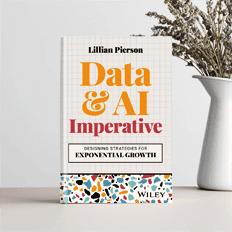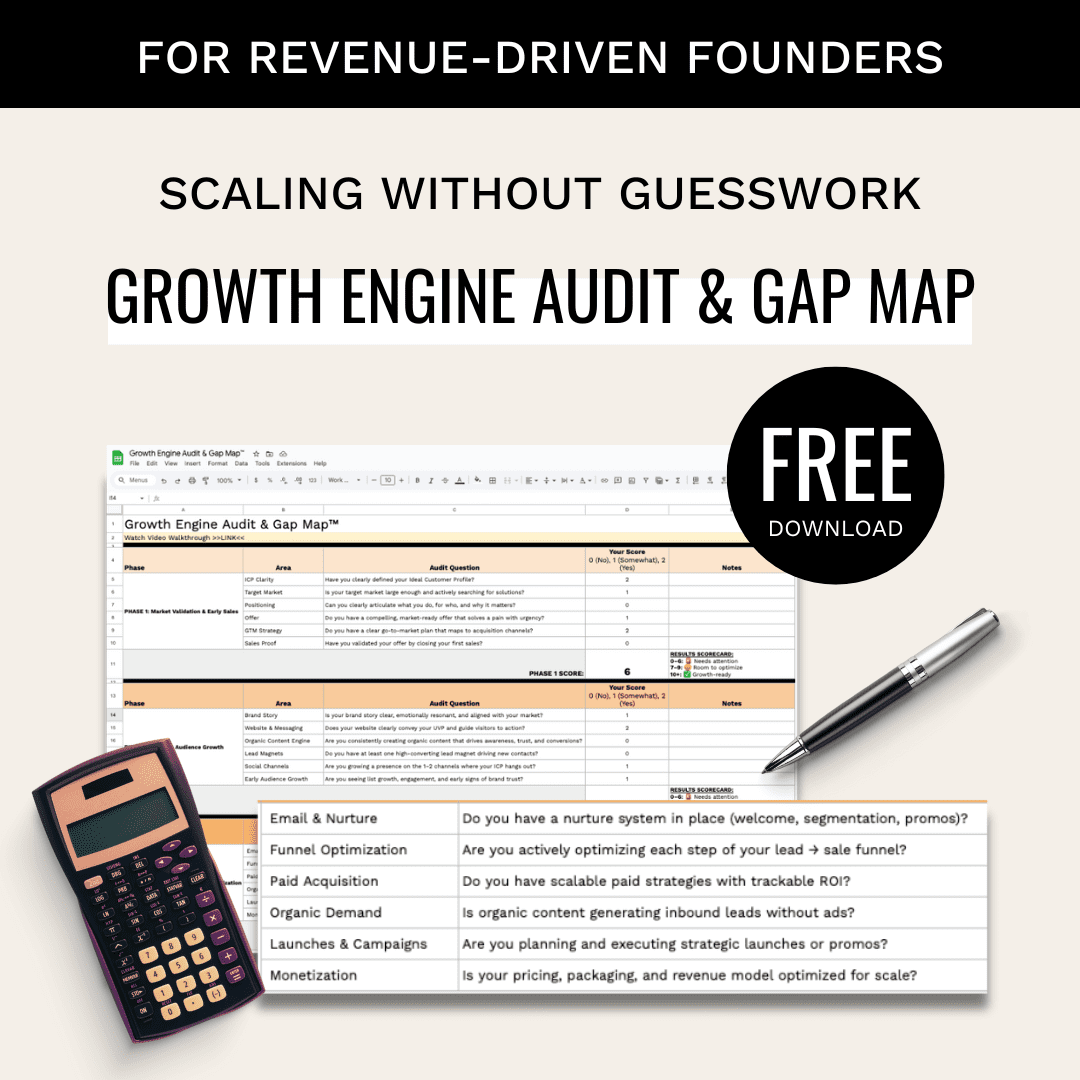Want to make smarter decisions with A/B testing? Here’s how you can accurately interpret your results to avoid costly mistakes and improve outcomes:
- Understand Statistical Significance: Aim for a 95% confidence level to ensure your results are reliable.
- Set the Right Sample Size: Use factors like baseline conversion rates and the minimum detectable effect to calculate the sample size needed for trustworthy data.
- Run Tests Long Enough: Avoid stopping tests early; run them for at least one full business cycle to get stable results.
- Handle Unclear Results: Investigate issues like small sample sizes or external influences, then refine your hypothesis and test design.
- Segment Your Data: Break down results by user groups (e.g., device type, traffic source) to uncover hidden trends.
Key takeaway: Accurate A/B test interpretation requires careful planning, proper execution, and detailed analysis. These steps will help you turn test results into actionable insights for better decisions.
VWO Product Webinar: How To Interpret Your A/B Testing …

Statistical Significance Basics
Statistical significance helps distinguish real differences from random variation. Grasping this concept is key for making informed, data-driven decisions that can influence your business outcomes.
What Is Statistical Significance?
Statistical significance tells you how likely it is that your test results aren’t just due to chance. In A/B testing, the goal is often a 95% confidence level. This means there’s only a 5% likelihood that the observed differences between variants happened randomly.
Here’s a breakdown of confidence levels and how to interpret them:
| Confidence Level | Meaning | Suggested Action |
|---|---|---|
| 95% or higher | Highly reliable | Move forward with changes |
| 90–94% | Somewhat reliable | Consider further testing |
| Below 90% | Unreliable | Keep testing or adjust your test design |
Once you’ve established your confidence level, the next step is determining the right sample size to ensure your test’s reliability.
Determining Sample Size
The confidence level you choose directly impacts the sample size required. Too small a sample can lead to misleading results, while an unnecessarily large one wastes time and resources. Key factors influencing sample size include:
- Baseline conversion rate: Your current performance metric
- Minimum detectable effect: The smallest improvement you’re aiming to measure
- Confidence level: How certain you want to be
- Statistical power: The probability of detecting a real effect
For example, if your baseline conversion rate is 5%, and you’re aiming for a 20% increase (to 6%), you’ll need approximately:
| Confidence Level | Sample Size Needed (per variant) |
|---|---|
| 90% | 8,000 visitors |
| 95% | 10,000 visitors |
| 99% | 13,500 visitors |
Additional considerations for sample size:
- Segment analysis: Breaking down data by segments requires more visitors to maintain significance.
- Multiple variants: Testing more than two versions increases the overall sample size needed.
- Small effect sizes: Detecting minor improvements demands much larger samples.
Without enough data, your results may be inconclusive or lead to incorrect conclusions.
Test Duration Guidelines
Choosing the right test duration is key to getting trustworthy A/B test results. It directly impacts whether you hit your sample size targets.
How Long Should You Run a Test?
The length of your test depends on factors like your website’s daily traffic, conversion rates, and business cycle patterns. To get a complete picture of user behavior, it’s best to run the test for at least one full business cycle. A helpful way to estimate the duration is to divide the required sample size by the average number of daily unique visitors per variant. Don’t forget to factor in how many variants you’re testing.
Why You Shouldn’t Stop a Test Too Soon
Ending a test early can lead to unreliable results, like false positives, and poor decision-making. Even if results look promising early on, they might just be temporary fluctuations. Metrics often need time to stabilize, and cutting the test short could mean missing out on accurate insights. Waiting for steady results ensures you’re making decisions based on solid data.
sbb-itb-e8c8399
Managing Unclear Results
A/B tests don’t always produce clear winners, but they can still provide useful insights. Understanding why results are ambiguous and knowing what to do next is key to keeping your testing program productive.
Why Results Might Be Unclear
Unclear outcomes often arise from issues related to sample size, test setup, or external factors:
Sample Size Challenges
- Not enough traffic to achieve statistical significance
- Uneven distribution of traffic between test variants
- High bounce rates reducing the effective sample size
Problems with Test Design
- Testing too many variables at once
- Weak or poorly defined hypotheses
- Focusing on elements that barely influence user behavior
External Influences
- Seasonal changes affecting user behavior
- Technical glitches during the test period
- Shifts in the market or competitor actions
By identifying these causes, you can take steps to improve future tests.
What to Do After Unclear Results
When test results are inconclusive, follow these steps to gain insights and refine your approach:
1. Review How the Test Was Run
Double-check the test execution to ensure everything was set up correctly:
- Verify accurate tracking and even traffic allocation
- Confirm that the right audience segments were targeted
2. Analyze Key Segments
Break down the data to uncover trends that might not be obvious at first glance:
- Compare performance across device types (e.g., desktop vs. mobile)
- Look at traffic sources to see if one performs better
- Examine user demographics or time-of-day patterns
3. Refine Your Hypothesis
Use what you’ve learned to design better tests:
- Test one variable at a time for clearer results
- Make the differences between variants more pronounced
- Focus on specific user segments that showed potential trends
4. Document Everything
Keep detailed records of your tests, including:
- Test conditions and outcomes
- Any unexpected user behavior
- Patterns observed across multiple tests
5. Adjust and Extend
If results are promising but not definitive, consider:
- Extending the test duration to gather more data
- Narrowing the scope of changes being tested
- Targeting a more specific audience segment
Even when results are unclear, they can highlight areas for improvement. Use these insights to sharpen your testing strategy and design more effective experiments in the future.
Advanced Results Analysis
Data Segmentation Methods
Breaking down aggregate metrics helps uncover detailed user behavior patterns that often go unnoticed. This approach dives deeper than surface-level metrics, providing precise insights that can guide your decisions. By refining your segmentation, you can group data based on specific characteristics for a more focused analysis.
Consider dividing your audience into groups like:
- New vs. returning users: Understand how first-time visitors behave compared to loyal users.
- Device-specific behaviors: Explore how user actions differ between mobile, desktop, or tablet devices.
- Traffic sources: Examine performance across channels like organic search, paid ads, social media, or direct visits.
- Geographic location: Identify trends based on where your users are located.
- Time-based patterns: Look at how behavior changes depending on the time of day or day of the week.
- Engagement levels: Analyze metrics like session duration or the number of pages viewed per visit.
This level of segmentation helps create a clearer picture of your audience and their behavior.
Conclusion
Interpreting A/B test results effectively goes beyond just looking at basic metrics. By applying thorough statistical analysis and breaking down data into detailed segments, you can uncover insights that drive business growth and create a reliable, repeatable process for future experiments.
To strengthen your approach, consider these steps:
- Centralize your findings: Keep results and key takeaways in one place for easy reference and analysis.
- Refine your hypotheses: Use insights from each test to adjust your assumptions and deepen your understanding of your audience.
- Expand successful variations: Apply winning strategies across different segments, while keeping an eye on performance.
A/B testing is a powerful tool for making informed, data-driven decisions. By following these practices, you can accurately interpret results and turn insights into actionable strategies that improve outcomes. Plus, it’s a continuous process that helps fine-tune your marketing efforts over time.
FAQs
How do I calculate the right sample size for an A/B test to get reliable results?
To determine the correct sample size for your A/B test, you need to consider a few key factors: the baseline conversion rate, the minimum detectable effect (the smallest difference you want to detect), your desired statistical significance level (commonly 95%), and the statistical power (typically 80%). Tools like online sample size calculators can help simplify this process.
Accurate sample size calculations ensure your test results are both reliable and actionable, reducing the risk of false positives or negatives. If you’re unsure where to start, consulting a data expert or leveraging resources like those provided by Data-Mania can guide you toward data-driven decision-making.
What mistakes should I avoid when analyzing A/B test results?
When interpreting A/B test results, it’s important to avoid several common pitfalls to ensure your conclusions are accurate and actionable. First, don’t rely solely on statistical significance – while it’s important, it doesn’t guarantee practical significance or real-world impact. Second, avoid stopping the test too early, as this can lead to misleading results due to insufficient data. Third, be cautious of over-segmenting your data; analyzing too many subgroups can increase the risk of false positives.
Lastly, always consider external factors, such as changes in user behavior or seasonality, that might influence the results. By staying aware of these pitfalls, you can make more confident, data-driven decisions that truly benefit your business.
How does data segmentation enhance insights from A/B testing?
Data segmentation can significantly improve the insights you gain from A/B testing by breaking down your audience into smaller, more specific groups. This allows you to analyze how different segments respond to variations in your test, uncovering trends and behaviors that might be hidden in the overall data.
For example, you might segment users by demographic, geographic location, or behavior. By doing so, you can identify which groups respond most positively to a particular change and tailor your strategies accordingly. This targeted approach leads to more actionable and impactful results, helping you make better-informed decisions.
Related posts
- How Data Improves ABM Segmentation ROI
- 10 A/B Testing Tips for B2B Campaigns
- A/B Testing Steps for Landing Pages
- How to Test a New Product Idea by Use Landing Pages and $100 in Ads





